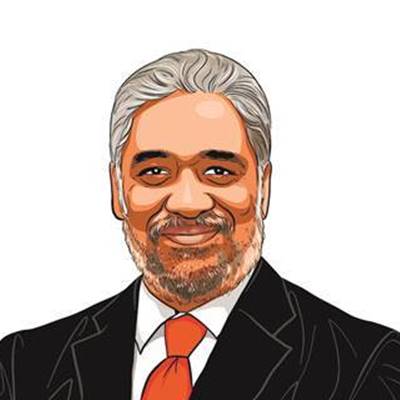Opinion Defence diplomacy
As China rises and India emerges,their military engagement with the rest of the world has steadily grown.
As China rises and India emerges,their military engagement with the rest of the world has steadily grown. As they turned inwards in the 1950s,both Beijing and Delhi turned insular in the military domain too.
While the Indian armed forces retained a measure of international presence through their participation in the United Nations peacekeeping operations,the Peoples Liberation Army largely remained in the shadows. In the last decade,Beijing has put a special emphasis on military diplomacy as an important element of Chinas national security strategy. As its interests become global,Chinas international military footprint is rapidly growing.
While the external interaction of the Indian armed forces has grown considerably since the early 1990s,Beijing scores over Delhi in the better institutionalisation and greater integration of its military diplomacy with the conduct of external relations. A recent report in the PLA Daily underlines what it calls the splendour of Chinas military diplomacy.
According Qian Lihua,the director general of the foreign affairs office of the ministry of national defence,Chinas military diplomacy during 2006-10 has witnessed constant expansion with more objects,wider fields and greater depth,forming an all-dimensional,multi-tiered and wide-ranging landscape. Qian reports that up till now the Peoples Republic of China has established military relations with 150-plus countries and set up the military attache offices in 112 countries while 102 countries have set up their military attache offices in China.
He adds that PLA dispatches about 170-plus military delegations to visit foreign countries and receives 200-plus foreign military delegations every year. The PLA also sent 1,200-plus military students to study in nearly 100 military academies of 30-plus countries.
The PLAs military diplomacy covers the full range from high-level contacts,professional exchanges,personnel training,joint exercises and training,international arms control and public diplomacy. It involves the general headquarters/departments,armed services and the area commands of the PLA.
After shunning international peacekeeping for decades,the PLA now sees it as a valuable tool in learning to operate in foreign lands. Since 2006,China has dispatched 13,000 officers and men to participate in 13 UN peacekeeping operations. Since late 2008,the PLA navy has sent seven naval escort task forces to the Gulf of Aden and the waters off the Somali coast to offer escort for 3,000-plus Chinese and foreign merchant ships.
Qian claims that PLAs military diplomacy has enriched the conduct of foreign relations,cemented and deepened Chinas cooperation in defence and security with other countries and played a unique role in creating a good external environment for Chinas development.
Selling arms
In the last few years,China has stepped up its efforts to improve the quality and value of its arms exports to the developing countries,according a recent annual survey of global arms trade conducted by the Congressional Research Service (CRS) in Washington. The CRS reports that from 2006-2009,the value of Chinas arms transfer agreements with developing nations averaged over $1.9 billion annually.
A significant portion of Chinas totals can be attributed to the major contract with Pakistan,a key client,associated with the production of the J-17 fighter aircraft, the CRS says. China has been an important source of missiles and related technology in the developing worlds arms market,especially to North Korea,Pakistan,the Middle East.
China has also supplied small arms and light weapons to African and other developing states. Since the prospects for significant revenue earnings from these arms sales are limited,China likely views such sales as one means of enhancing its status as an international political power,and increasing its ability to obtain access to significant natural resources,especially oil,the CRS report concludes.
Russian clones
After importing a significant quantity of advanced weapons from Moscow in the last two decades,China is now producing Russian-designed weapons and may soon export them. A recent report in The Wall Street Journal says: China is starting to export much of this weaponry,undercutting Russia in the developing world,and potentially altering the military balance in several of the worlds flashpoints.
Russia and China are now quibbling over intellectual property rights. The Journal quotes a Russian official as saying that one of Chinas latest fighters,the J-11B,is a copy of the SU-27 that it had supplied to Beijing in the 1990s. The Russians say that after producing under licence nearly 100 SU-27s,the Chinese cancelled the contract in 2004 and within a few years,unveiled the J-11B.
raja.mohan@expressindia.com


